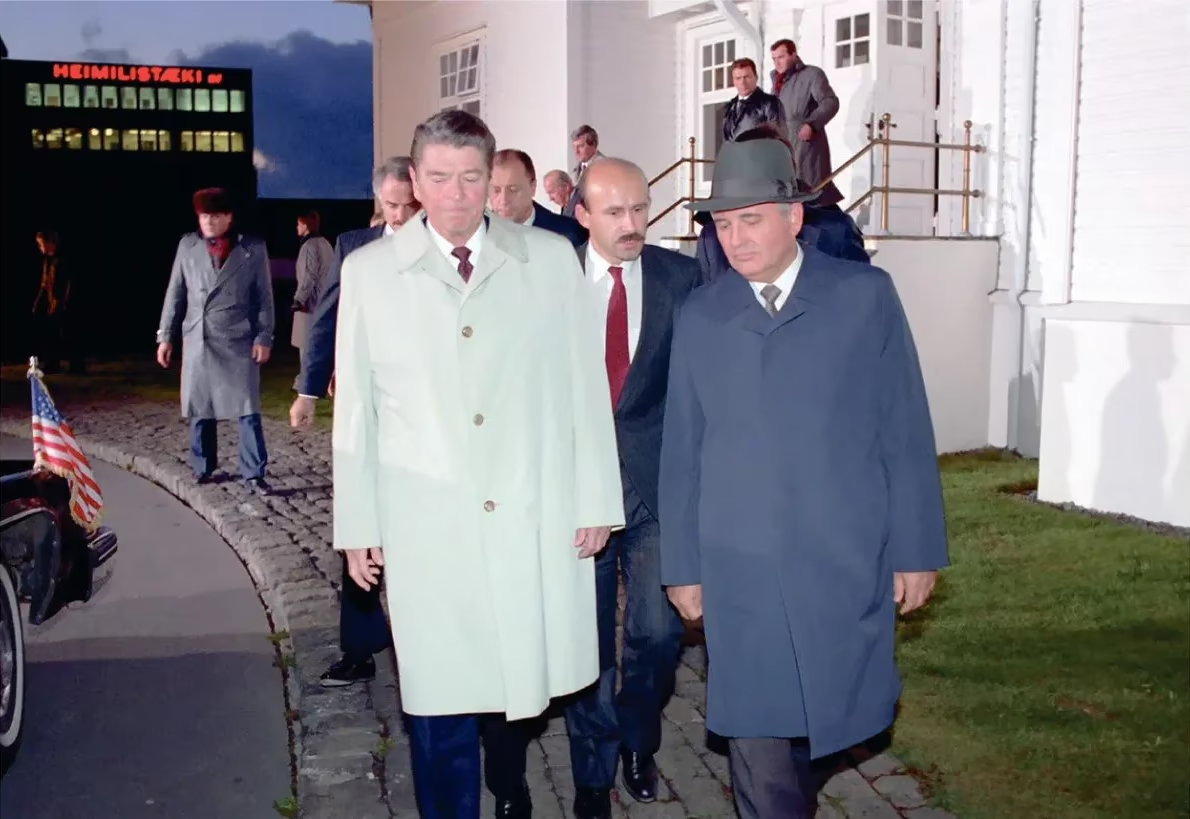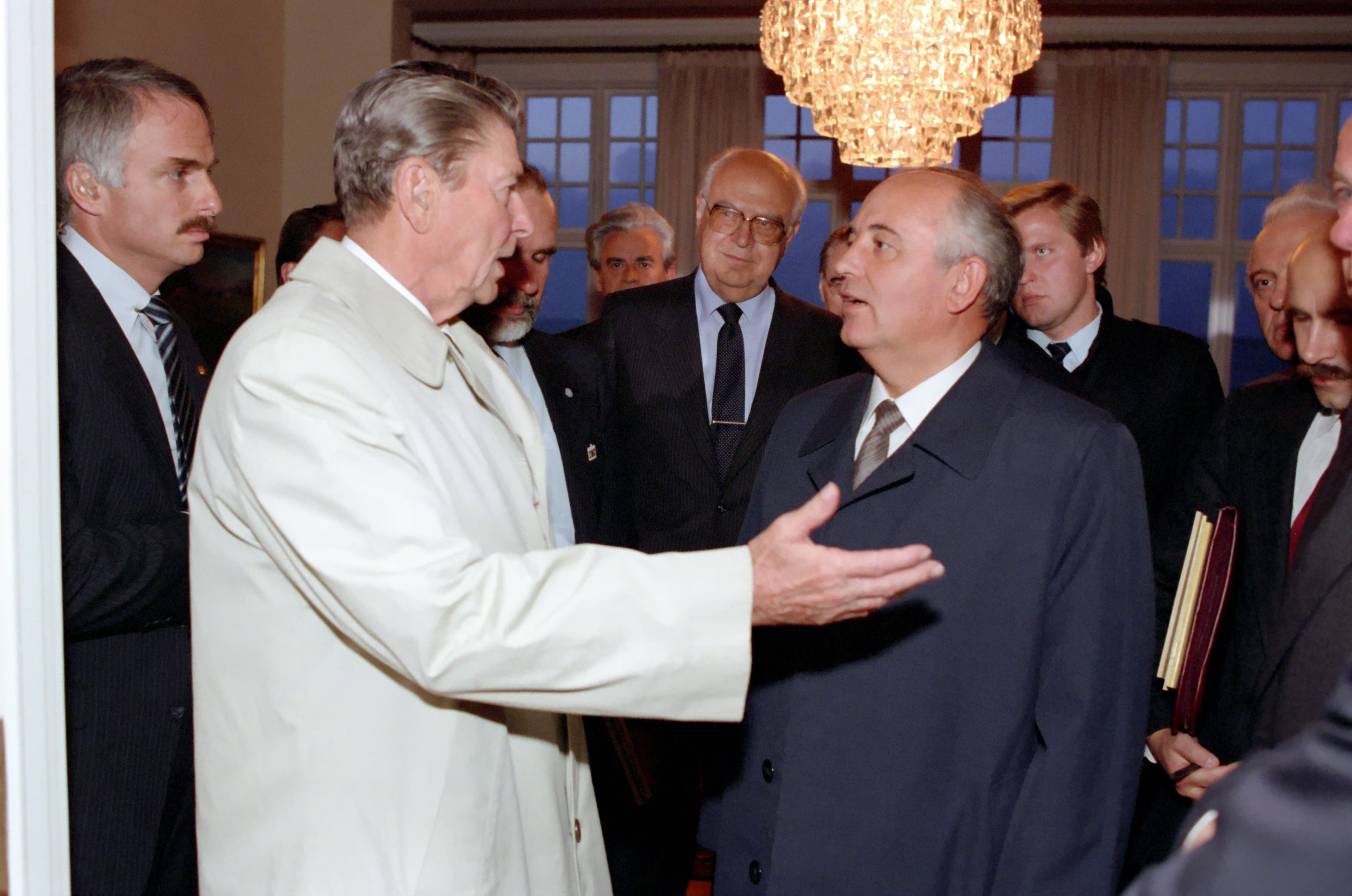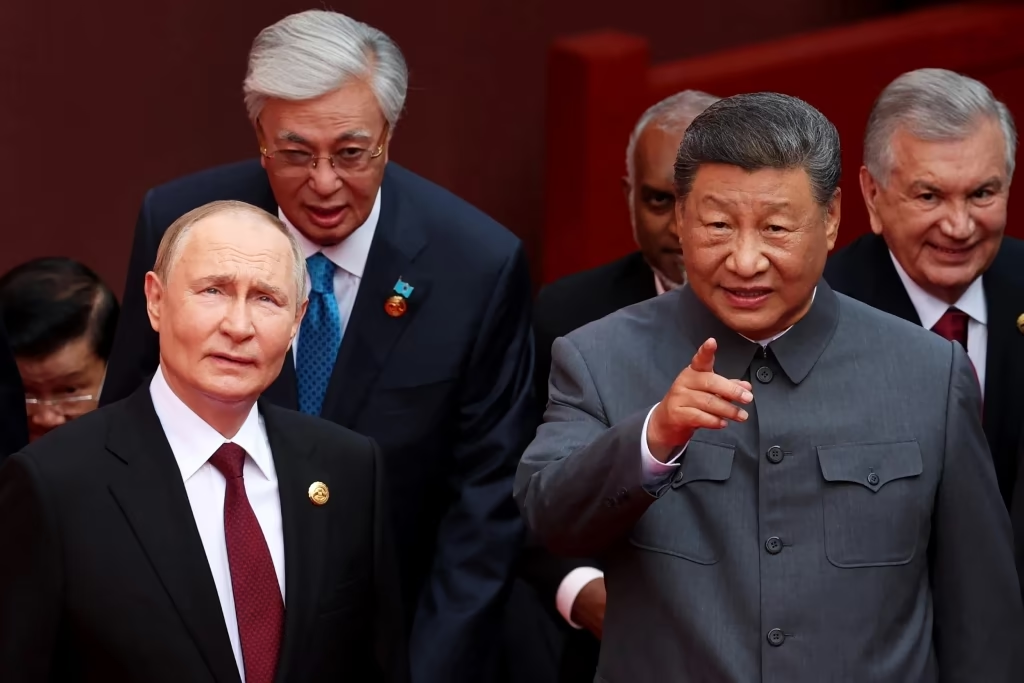Summits where world leaders meet rarely deliver immediate results, but they almost always shift the political balance. They can weaken rulers or, conversely, give them new weight at home. That was the case in Reykjavik in 1986, when Mikhail Gorbachev tried to halt the arms race but returned defeated, hastening the Soviet Union’s decline. And so it was in Anchorage in August 2025, where Donald Trump and Vladimir Putin met: the talks did not bring peace to Ukraine, but they marked a diplomatic triumph for the Kremlin and strengthened the Russian president’s position.
Summits between heads of state are usually seen as high-stakes gambles aimed at breakthroughs. They are often judged by whether they can resolve a protracted international crisis. Yet their impact is often felt more strongly at home. That was the case with the August meeting between Donald Trump and Vladimir Putin in Alaska: it bolstered the Russian president, prolonging the war in Ukraine while consolidating his grip on power.
The Anchorage meeting inevitably recalls 1986, when Ronald Reagan and Mikhail Gorbachev convened in Reykjavik to discuss ways to end the arms race. In both cases, the American and Russian leaders sought to resolve a central issue in world politics—then, halting the nuclear confrontation; now, ending the war in Ukraine. In both cases, the outcome was negative: Reagan refused to abandon his Strategic Defense Initiative, and the Alaska talks ended without any agreement.


From there, the parallels diverge. The failed summit on the island only hastened Gorbachev’s decline: his inability to halt the American defense program weakened his standing in the Kremlin and became one of the links in the chain of events that led to the Soviet Union’s collapse five years later. Putin, by contrast, emerged as the winner. In Anchorage, Trump ostentatiously paid him tribute and called their relationship "fantastic." The Russian president made no concessions, while Trump shifted responsibility for ending the war onto Kyiv, telling Fox News: "Now it really is President Zelensky’s task."
If before the summit Putin had no serious rivals at home, he has now acquired the aura of success, having seemingly bent the American leader to his side. According to a poll by the independent Levada Center in late August, 79 percent of Russians considered the meeting a success for Putin, and 51 percent expressed hope for improved relations with the United States. Unlike the usual propaganda framing, this time Russian media broadcast genuine footage and quotations from Western outlets emphasizing Putin’s diplomatic victory. Strengthened, he has gained the ability to wage war against Ukraine for as long as he deems necessary, aiming to impose his own terms.
Gorbachev: Hopes for Reform and Failure in Reykjavik
When the Politburo elected Mikhail Gorbachev general secretary of the Communist Party in 1985, the country was in urgent need of change. Soviet troops were bogged down in Afghanistan—a conflict Gorbachev himself called a "bleeding wound." The centralized system of governance was proving wholly ineffective, stalling the economy. Détente with the United States, which had lasted from the late 1960s through the late 1970s, had done little to ease the confrontation. Meanwhile, corruption, shortages, and social inequality eroded public trust in the government.

Soviet troops in Afghanistan, 1985.
Gorbachev promised both conservatives and reformers that he would remedy these ills. But he was not talking about dismantling the Soviet system: he assured them success could be achieved through higher productivity and lower costs. To the elite, he guaranteed the party’s continued leading role. To realize his plans, he needed resources that could only be freed by normalizing relations with the West: reducing defense spending would open the way for economic modernization. On this basis, Gorbachev persuaded his colleagues to back talks with Washington on reducing strategic arms—provided the US abandoned its missile defense program, so as not to tip the balance in its favor.
With this logic he went to Reykjavik: to prove to the world, and to his domestic skeptics, that he could halt the arms race and give the economy a chance at recovery. But the outcome was a public failure. Before a global television audience, Ronald Reagan refused to shut down the Strategic Defense Initiative, and Gorbachev returned empty-handed. In Moscow, he faced a bruising Politburo session, where conservatives again insisted that without US abandonment of missile defense, no agreement was acceptable. The leader was caught between irreconcilable demands.
In the end, Gorbachev placed his bet on the reformist wing. In 1987, he signed the Intermediate-Range Nuclear Forces Treaty with Reagan, which placed no limits on the American missile defense program. Conservatives were sidelined, and his key ally became Foreign Minister Eduard Shevardnadze. In the years that followed, Gorbachev launched sweeping reforms, allowing semi-legal private enterprises and expanding the autonomy of the Soviet republics. But instead of economic revival, the changes dismantled the old system without creating a new one. Food queues grew longer, cities were gripped by hunger riots, and wages went unpaid.
In trying to hold on to power, Gorbachev undermined the very foundations on which it rested. By weakening the mechanisms of party control, he opened the way for national movements and new leaders, most notably Boris Yeltsin, who rose swiftly. Ultimately, these forces swept away the remnants of the weakened state. In December 1991, the Soviet Union ceased to exist.

China Opens Debt Market and Ports to Russia
Moscow Gains Access to Yuan and Energy Supplies, Bypassing Western Sanctions

A Military Parade in Beijing Gathered China’s Allies and Showcased New Weapons
Xi Jinping Declared That the Country Will Not Accept U.S. Dictates and Warned Taiwan

From Strategic Rapprochement to Distrust
How Trump’s Tariffs and Pressure Undermined Relations With India
Putin: A Personalist System and Consolidation Through the Alaska Summit
Russia under Vladimir Putin bears little resemblance to the late Soviet Union under Mikhail Gorbachev. The Kremlin no longer has collective leadership capable of checking the head of state. Putin reports neither to a Politburo nor to any influential council: he presides over a personalist authoritarian regime where the source of power is one—himself. Officials and businessmen in his circle owe their positions, influence, and fortunes entirely to personal loyalty and service to him. But that does not make his position invulnerable. Russian propaganda is effective, yet serious economic shocks could unsettle public calm. It also remains unclear how the elite would respond if their accustomed economic privileges were cut.

Vladimir Putin and Donald Trump at the Alaska summit. August 2025.
So far, the president has successfully avoided these risks. After more than three years of war, the economy has not collapsed under sanctions. On the contrary, thanks to the professionalism of his economic team, growth last year exceeded 4 percent—fueled by military spending. Employment, consumption, and access to credit remain high. In a police state it is hard to gauge true public sentiment, but there are no outward signs of threat to the regime.
Yet budget injections have stoked inflation—nearly 10 percent in 2024 and over 8 percent this year. The war carries heavy costs: sanctions limit trade, investment, and access to technology, eroding productivity and growth prospects. Russia sells oil to China and India, but the narrowness of those markets forces it to do so at a discount. The army can still recruit contract soldiers, but only by offering hefty signing bonuses and higher pay, which in turn exacerbates labor shortages and inflation.
Against this backdrop, Putin’s appearance in Alaska served as a form of domestic compensation. He secured no formal concessions, nor the promised business deals with Washington. But for the Russian elite and the public, his victory was clear: he broke through isolation, demonstrating his willingness to fly to the US despite sanctions and international court warrants; he managed to delay or perhaps avoid new restrictions on oil exports; and he once again underscored that Moscow insists not only on recognition of its control over Ukrainian territories but also on subordinating Ukraine’s sovereignty.
The summit allowed the Kremlin to lend legitimacy to its own claims. To those who doubted the justification of the invasion, Putin framed it as the promised "just" war. In Anchorage, speaking against the backdrop of a banner reading "In Search of Peace," he talked about Russia’s "legitimate concerns," the pursuit of a "fair balance of security in Europe and the world," and the "need to address the root causes" of the conflict. Donald Trump did not challenge these formulations. More than that, he effectively acknowledged Moscow’s right to interfere in questions of Ukraine’s territorial integrity and Western security guarantees. Returning home, Putin presented himself to the public as having been right from the very beginning, insisting that there should be no concessions.
For him, the summit was never about seeking peace. From the outset, it was about imposing his own rules on the international system and preserving his monopoly on power at home. Since 2014, Putin has been playing a long game, convinced that time is on his side. Alaska gave him more time—and strengthened his position in pursuing military victory.
